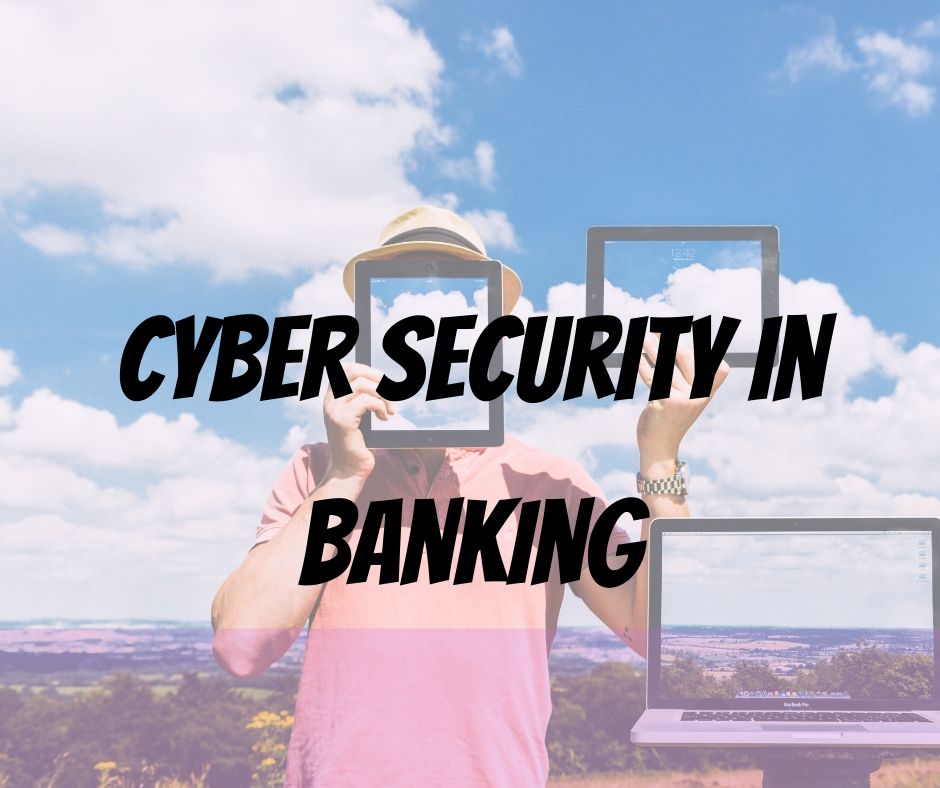The Ultimate Secret Of Cyber Security in Banking
- 19 April 2020 | 1524 Views | By Mint2Save

The Internet has revolutionized many things humans do and one of them is banking. The old banking system with new ones in which computers and the internet play a major role. But with the ever-increasing expansion of the internet, the associated impact and risk of cyber security threats are increasing too.
Not only customers, but banks too face cyber security risks. Some of the main reasons that cause risks are installing untrusted software, not being cautious of social engineering attacks, not updating the current software, etc. But first, let us discuss what different kinds of cyber risks are there in banking:
What is the Risk in Banking Terms?
With respect to the customer and cyber banking, risk in banking terms can be restricted to the following:
(a) Account Security.
(b) Genuineness of payments.
(c) Data protection.
The security concerns, however, haven’t been at par with increase in digital banking services. Several instances of data breach, online heists etc., have shattered people’s trust on cyber banking a number of times.
What are the threats to Banking Industry?
Malware:
Malware is malicious software that is used with a bad intent of gaining unauthorized access of a system and causing direct or indirect damage. If the banking institutions’ systems are not secured, it poses a high risk as malware could attack and cause a lot of damage.
Not all malware directly attacks the banking systems though, the malware might be installed on the client-side which could use the connection between the client and the banking systems network to infect them. Malware that is present only on the client-side also poses a great risk as it might be used to steal the credentials of the user. While this could be countered to an extent by using two-factor authentication, some banking services are not using it.
Malware comes into the systems through a wide range of things, but one of the things that make it more probable in this context is the use of untrusted third party software even by the banks in order to give better services. These might inject malware in the disguise of providing useful services.
Presence of Unencrypted Data:
Even if all the measures used to protect the data had failed and the hacker is able to steal the data, one could prevent the proper use of them by encrypting the data. Encryption or encipherment refers to the process of turning the original data into another form i.e., a cipher that cannot be understood at the outset. In order to understand the contents of the cipher, one must perform the process of deciphering or decryption the data which requires a special key that is only given to authenticated users so that only they can extract the original data. These whole algorithms for encryption and decryption are called cryptographic algorithms.
So, if the hackers got hold of the data on the systems or the network, they actually will get hold of the encrypted form of data and would not be able to retrieve the original data as they don’t have the key. Due to the sophisticated techniques of encryption, It would be hard for them to use brute force techniques too.
Vulnerabilities of people:
By vulnerabilities in people, we mean that their chance of believing a fraud mail is real. That is, users might get a call or a mail asking for some sensitive details like password in an attempt for doing something, let’s say they are moving the database and require you to give the password. They will make many efforts to make the email look like the same regular mails that you might receive to get you into believing their mail and once you give your information, you know the rest.
This whole process is referred to as social engineering and most of the social engineering attacks use these techniques. Like making them look legitimately coming from the bank and use you to give details or lead you through installing malware thus infecting you and potentially the bank’s network. You generally would not know that you have been scammed until the situation got out of hand.
Can Bank Employees access your account without Permission?
There is also another threat where employees might intentionally be ready to give sensitive information as they might not be satisfied with the treatment from the bank and thus want to take revenge. These people can be used for gaining information and possibly access to the company network.
This is not only prevalent in banking but also a problem in various other domains while these are decreasing day by day as people are getting more knowledgeable and not reacting to such tries, this still poses risk as attackers are advancing and using more believable forms of phishing so as to lure people and attack the systems.
Now that we understand the general cyber security risks in banking, let us see some of the specific risks that can and also have stemmed from one or more risks mentioned above.
Identity theft & fraud:
Identity theft is said to happen when there is a misappropriation of a person’s identity without their content. Identity theft is the prime result of the data breach and when the fraudsters can gain enough information about someone’s identity including their passwords, they can commit identity fraud where they will impersonate the identity of the authenticated customers in doing transactions.
What is a Cyber Crime in Banking?
Identity fraud is broader than identity theft as the fraud could happen not only with the stolen identities but also some genuinely obtained documents using false information.

The hackers might also sell the data in the dark web to other cyber criminals which may use these stolen identities in any other thing. It is estimated that the banking sector is losing more than $10 million through identity theft every year.
These are some of the red flags that indicate you are/could be a victim of identity theft:
- You had lost or had been stolen of some important documents that contain your identities such as a passport or driving license
- Items that you do not recognize start appearing on your card statements
- You might get an error that you are already claiming the state benefits when you try for the first time to obtain it.
- Despite having a good credit score, you have been refused for granting a financial service like loans or new credit cards.
- You have received letters or calls from debt collectors or some financial institutions clearing of debts you did not take
Supply chain attacks:
Supply chain attacks are said to occur when a hacker infiltrates the banking system through outside partners with access to your items and data. This combines both the social engineering and malware risks as we discussed earlier.
Some instances of this happening are that of a breach at the target corporation in 2014 which exposed the personal and also credit card details of more than 110 million of its consumers. The cause for this massive breach is expected to have begun with a phishing email sent to the employees at an HVAC firm that did business with Target.
Paradise papers also suffered this supply chain attack with over 13 million files which contain the information of offshore tax avoidance by many major corporations, politicians and celebrities were exposed. This had happened due to the exploitation of a law firm related to that paradise paper.
Techniques such as DNS lookup and connect the following grant remote access to the hacker while the user will not be even aware of it. With access to the network granted, the attacker can now bypass the detection system and infiltrate the system.
These are some of the general and specific risks that both banks and their customers have in cyberspace. Let us now see some of the measures to be taken against these risks. One thing to keep in mind is that one can also suggest measures to decrease the intensity and possibility of an attack but not completely avoid all kinds of attacks.
Measures to take for decreasing Cyber Risks:
How does a bank protect their data?
Securely transmit and store the data:
As said earlier, if one had secured the transmission and storage of data by using proper cryptographic algorithms,
Use only trusted software and websites:
By using only trusted software and websites for downloading the software, one can be assured that it does not contain any malware. But nonetheless, checking those files for possible infections is necessary as the companies themselves are being attacked and are being injected with malware.
Update the software regularly:
Even the wide range of trusted software you use might have security vulnerabilities that hackers can exploit. Many, if not all the software providers will be constantly striving in finding and fixing them. They will be frequently releasing updates regarding new fixes and by keeping your software updated, you will be ensured that all known security vulnerabilities of the software are fixed.
By reducing the vulnerabilities of people:
By being aware of what kinds of mail the company sends and by being able to distinguish the legitimate emails from the fraud ones, one can not be vulnerable to such attacks. One must also make sure that people who have access to sensitive information are not potential traitors of the company and they guard the secrets well.
These are only some of the measures that help you keep your systems secure. Make sure you study and understand all the developments in security standards and implement them as required.









